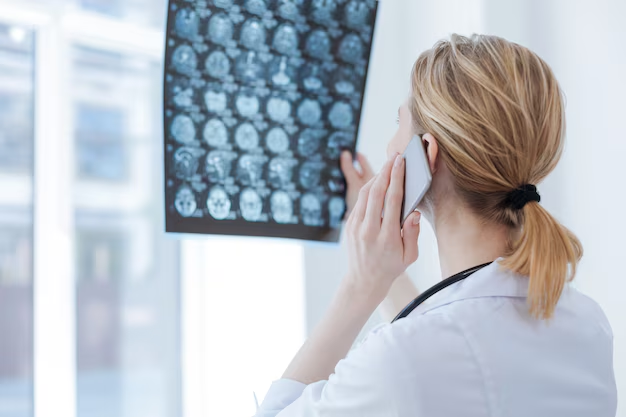Understanding Brain Aneurysms: What You Need to Know
Imagine a small balloon forming on the side of a blood vessel in your brain. This balloon, if left unchecked, has the potential to grow and rupture, causing significant harm. This is the essence of a brain aneurysm. While the concept might sound alarming, understanding what a brain aneurysm entails, its signs, potential risks, and how it can be managed, can empower you to face it with a sense of calm and preparedness.
What Exactly Is a Brain Aneurysm?
A brain aneurysm is a bulging, weakened area in the wall of an artery in the brain. The pressure from the blood flow causes this area to balloon out and fill with blood. These can occur in any part of the brain but most commonly affect arteries located at the base of the brain.
Types of Brain Aneurysms
- Saccular Aneurysm (Berry Aneurysm): The most common type, characterized by a round outpouching that resembles a berry on a stem.
- Fusiform Aneurysm: This type involves widening along all walls of the artery and does not have a stem.
- Mycotic Aneurysm: Caused by an infection in the arterial wall, leading to an aneurysm forming at that site.
Why Do Brain Aneurysms Occur?
The exact cause of brain aneurysms isn’t fully understood, but several factors contribute to their formation:
- Genetic Predisposition: Some people may be more prone to aneurysms due to inherited weaknesses in their arterial walls.
- Hypertension: High blood pressure is a significant risk factor as it places extra stress on blood vessel walls.
- Trauma and Injury: Any impact or injury to the head can potentially lead to aneurysm development.
- Smoking: This habit significantly increases the risk because it weakens blood vessels.
- Atherosclerosis: The build-up of fatty deposits in arteries can contribute to aneurysm formation.
Who Is at Risk?
While anyone can potentially develop a brain aneurysm, certain groups are more vulnerable:
- Middle-aged adults, especially between the ages of 45-65
- Women are more prone than men
- Those with a family history of aneurysms
- Individuals with certain genetic conditions like Ehlers-Danlos syndrome or polycystic kidney disease
Identifying the Signs and Symptoms
Often, brain aneurysms remain silent and undetected until they become quite large or rupture. However, some unruptured aneurysms can exert pressure on brain tissues or nerves, producing symptoms such as:
- Severe Headaches: Often described as the worst headache ever experienced.
- Vision Problems: Issues with vision can occur if the aneurysm presses on the optic nerve.
- Pain: Around the eye or difficulty with movement can signal a problem.
- Dilated Pupils: One pupil may be noticeably larger than the other.
- Numbness or Weakness: Particularly affecting one side of the face.
Warning Signs of Rupture
Ruptures are often sudden and have quite severe symptoms:
- Intense and severe headache
- Nausea and vomiting
- Stiff neck
- Sensitivity to light
- Loss of consciousness or confusion
- Seizures
How Are Brain Aneurysms Diagnosed?
Diagnosis usually involves a mixture of patient history, physical exams, and imaging tests. Here are key diagnostic tools:
- CT Scan: A quick, noninvasive test that provides detailed images of the brain and can reveal bleeding.
- MRI: Uses magnetic fields to produce detailed brain images, useful for smaller aneurysms.
- Cerebral Angiogram: An invasive procedure that uses dyes and X-rays to visualize blood flow through the arteries.
What Are the Treatment Options?
Not all aneurysms require intervention, especially if they are small and unruptured. However, treatment options vary based on the size, location, and risk of rupture:
Observation
For small, low-risk aneurysms, regular monitoring and management of risk factors such as hypertension and smoking can be sufficient.
Surgical Intervention
- Clipping: A surgical procedure involving the placement of a clip across the neck of the aneurysm to prevent blood flow into it.
- Endovascular Coiling: A minimally invasive procedure where coils are placed inside the aneurysm to encourage clotting and reduce rupture risk.
Lifestyle Considerations and Prevention
While some factors related to brain aneurysms cannot be changed, certain lifestyle adjustments can mitigate risks:
- Maintain Healthy Blood Pressure: Regular check-ups and medication may help keep blood pressure in control.
- Avoid Smoking: Quitting smoking can significantly reduce aneurysm risks.
- Healthy Diet and Exercise: Keeping your cardiovascular system in good shape via a balanced diet and regular exercise helps maintain strong vessel walls.
Monitoring and Support
Engage with healthcare providers regularly for check-ups and follow recommended lifestyle changes. Support networks and counseling can be beneficial for emotional challenges related to feeling at risk for or diagnosed with a brain aneurysm.
Bridging Knowledge to Action
Understanding brain aneurysms holistically paves the way for informed choices about health and well-being. Awareness is the first step toward proactive health management, where knowing symptoms, potential risks, and treatment options can improve outcomes and peace of mind.
Key Takeaways
- Early Detection: Watch for warning signs; early interventions can prevent complications.
- Risk Management: Control risk factors like blood pressure and smoking.
- Lifestyle Choices: Opt for healthy habits as a preventive measure.
- Regular Check-Ups: Maintain regular health check-ups, especially if at risk.
Through awareness, monitoring, and proactive health management, facing the prospect of a brain aneurysm can be less daunting and more about cultivating a resilient approach to overall health.
🔍 Summary & Key Points
- Types of Brain Aneurysms: Saccular, Fusiform, Mycotic.
- Risk Factors: Genetics, Hypertension, Smoking, Trauma.
- Warning Signs of Rupture: Severe headache, Vision problems, Nausea, Stiff neck.
- Diagnosis: CT Scan, MRI, Cerebral Angiogram.
- Treatment: Observation, Clipping, Endovascular Coiling.
- 🏃♀️ Prevention: Healthy lifestyle choices, blood pressure control, no smoking.
- 🩺 Regular Monitoring: Necessary for those with or at risk.
Approach life with awareness and informed choices to empower your journey to health and wellness. 🌟
